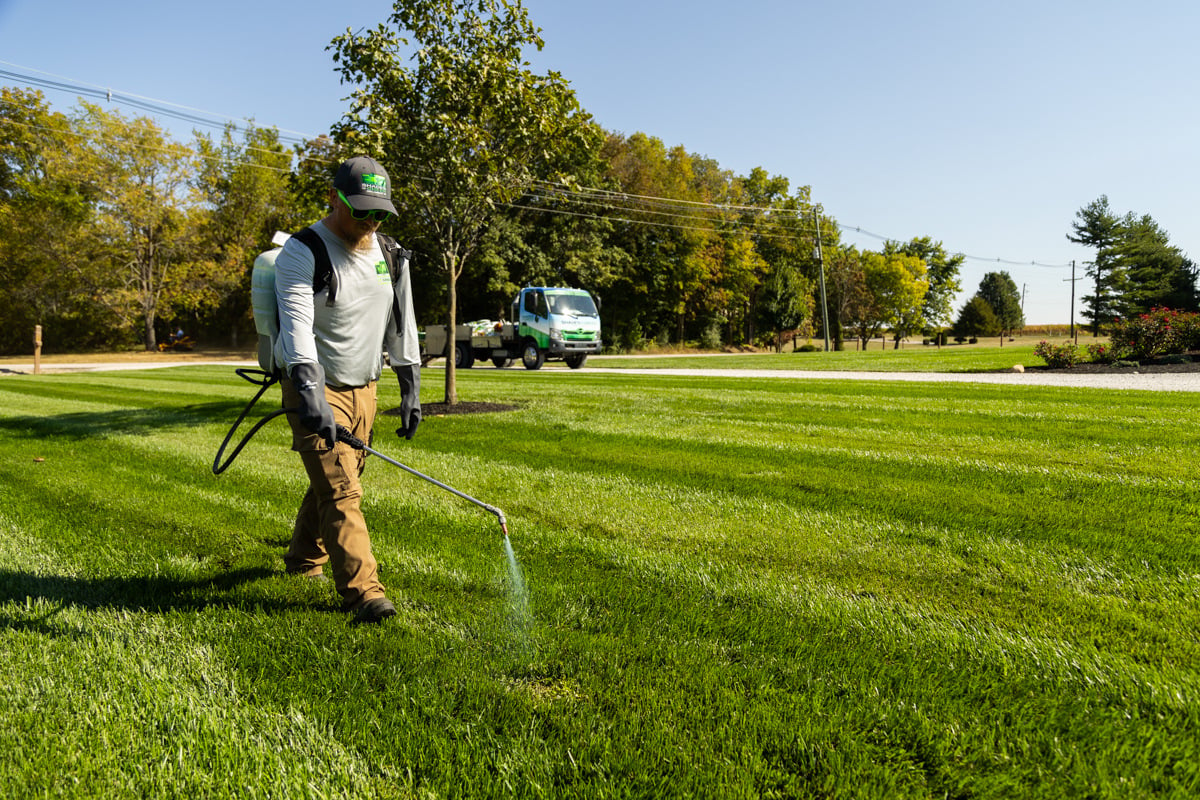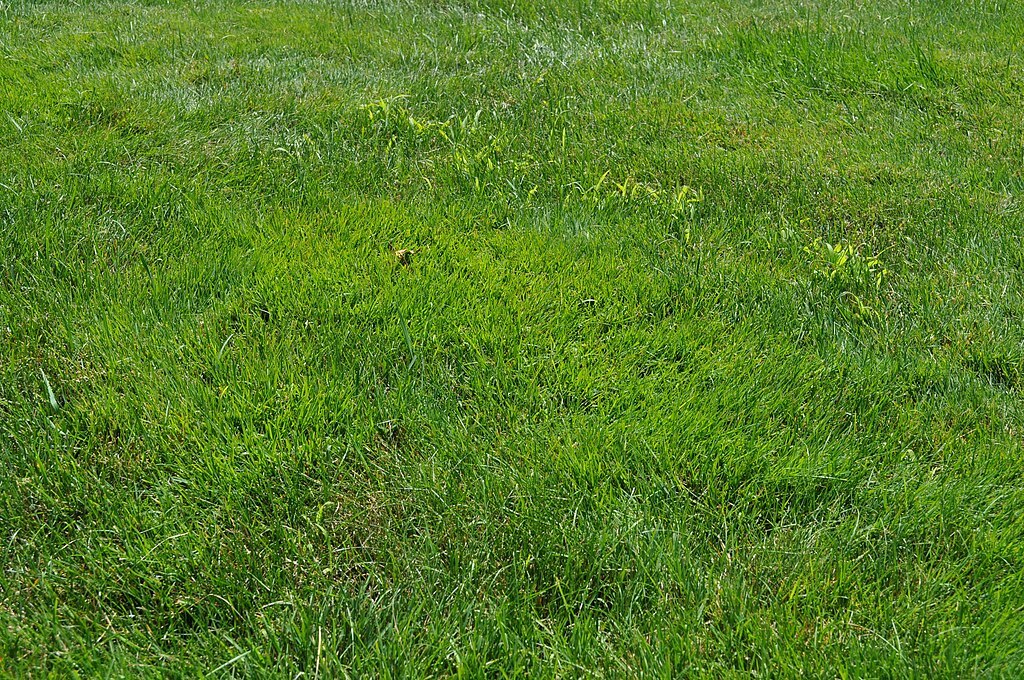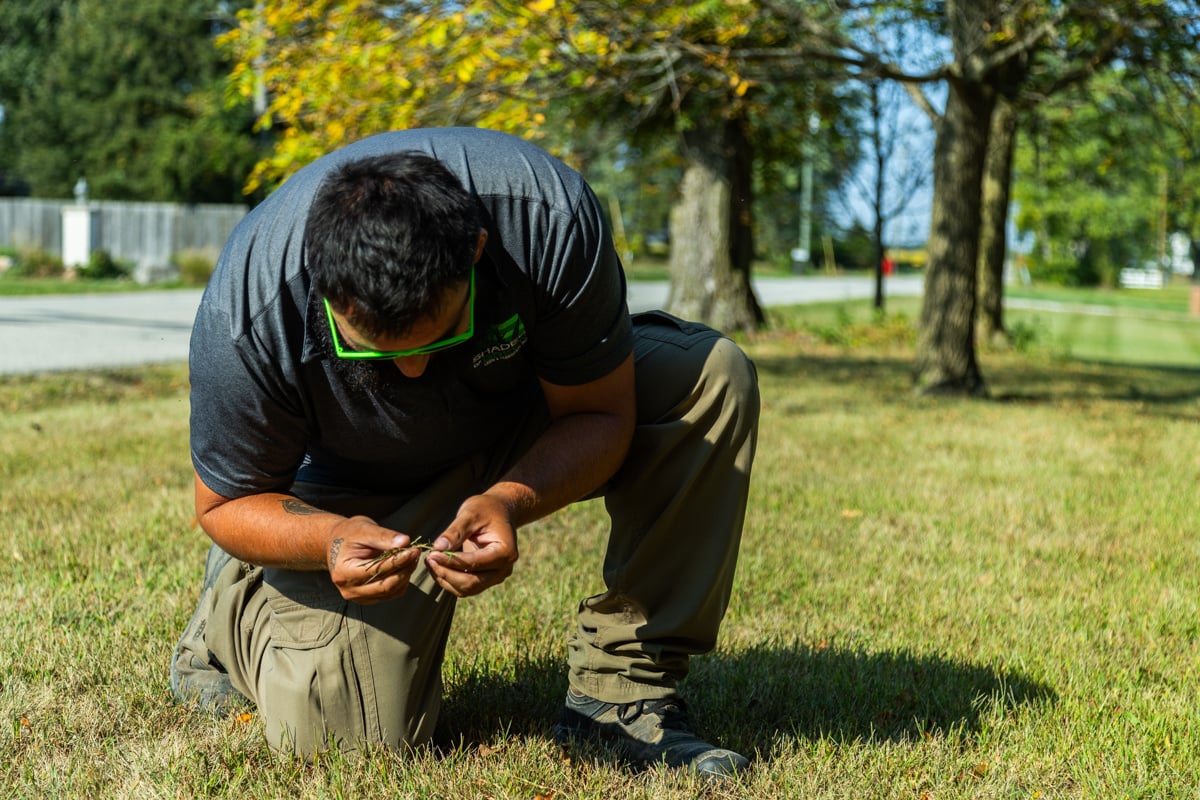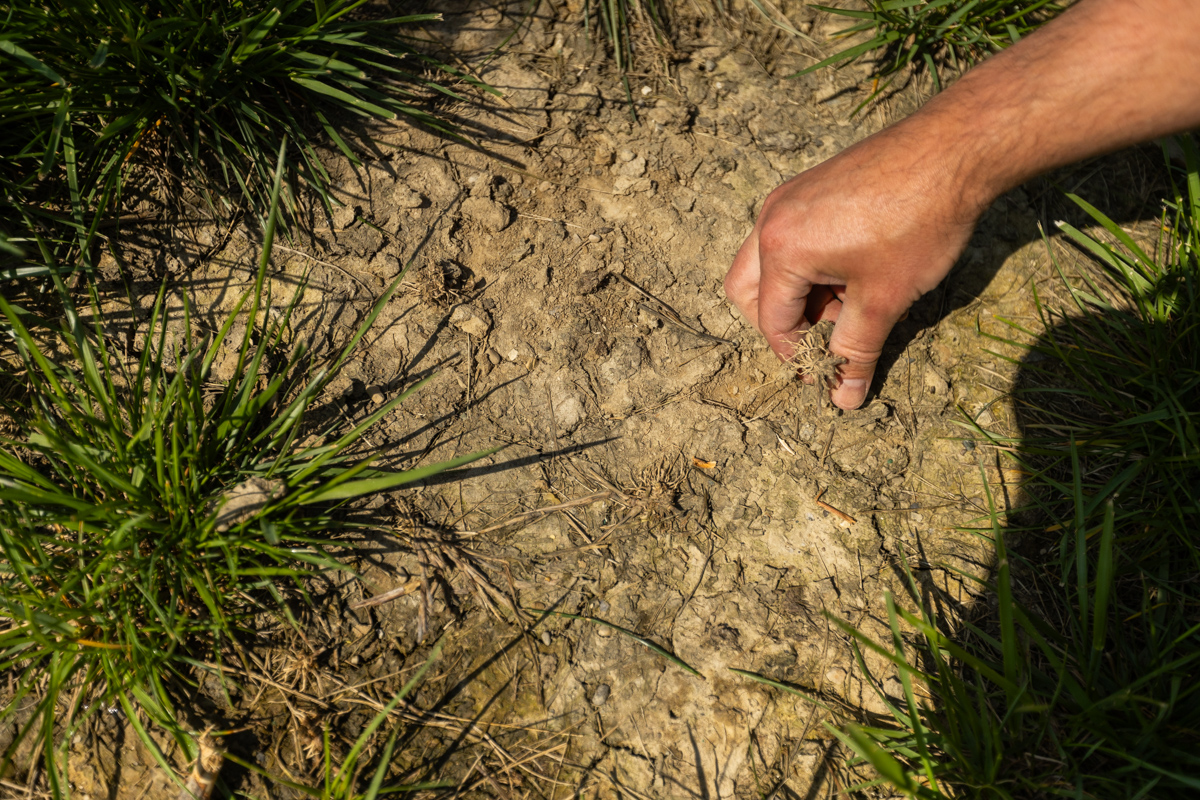



You’re out mowing one spring morning, admiring how green your lawn looks, until you notice a few lighter patches that don’t quite blend in. A week later, they’ve spread. The color’s off, the texture is different, and you are left wondering: Is that really grass or is it a weed?
It can be tough to identify what exactly is growing in your lawn here in Indiana, and weeds like Poa annua (also called annual bluegrass) make it especially tricky. It looks like regular turf to blend in at first, then disappears as summer heat sets in, leaving behind thin, patchy spots. Because it mimics desirable turf so closely, Poa annua grass is one of the most frustrating weeds to control.
Let’s take a closer look at:
What is Poa Grass
Poa Annua Identification
Poa Trivialis vs Poa Annua
How to Treat Poa Annua in Indiana
Partnering with Shades of Green to Prevent Annual Bluegrass
If you’ve ever noticed random patches of bright green grass that seem to pop up overnight and then suddenly fade out when summer hits, you’ve likely met Poa annua, also known as annual bluegrass. Despite the fancy Latin name, this grass is an uninvited guest at your lawn party, one that looks like it belongs at first, but doesn’t play by the same rules.
Poa annua is a winter annual (sometimes a weak perennial) grass with a bunch-type growth habit, meaning it grows in little clumps instead of spreading smoothly like your desirable turf. Poa grass loves cool, moist, compacted areas, which means it thrives when your lawn is struggling. Areas that are overly shaded, overly watered, or places with poor drainage and soil compaction are frequent Poa annua homes. This grass produces a ton of seeds every year, making it one of the toughest weeds to control.
It is especially sneaky because its biology is so similar to desirable turf grasses, like Kentucky bluegrass. That is part of what makes it such a headache across Indiana. Poa grass blends right in - until it doesn't. You will notice it most in late spring, when it begins to flower, and again in summer, when it turns yellow and fades out under heat, drought, or disease stress.
To spot Poa annua grass, look for grass with yellowish-green leaves that are folded in the bud (instead of rolled) and have a distinct boat-shaped tip. When it flowers, the seedhead forms a pyramid shape, making it stand out from your smoother, darker Kentucky bluegrass types.
If you are comparing Poa annua vs. Kentucky bluegrass, here are some distinguishing characteristics:
In short, yes, it can be very bad. Poa annua grass might look fine in spring, but it doesn’t stick around when your lawn really needs it. Once the heat hits, it dies back and leaves behind thin, bare spots, which make your lawn more vulnerable to other weeds. Also, since it produces seeds so aggressively, it can quickly spread and crowd out the healthy turf you actually want.
Poa grass is one of those weeds that seem harmless at first glance, but can cause major frustration for Indiana homeowners who want their grass to shine.
While we are talking about the poa grasses, it is important to mention Poa trivialis, also known as rough bluegrass. Like Poa annua grass, it loves cool, damp, and shady spots, but here’s the key difference: Poa trivilalis is a perennial weed, meaning it comes back year after year.
Both poa varieties look quite similar, but the giveaway is during the summer months. While Poa annua fades and dies off, Poa trvialis doesn’t die. Rough bluegrass simply goes dormant when heat, drought, or disease hits hard and bounces right back in September. Both species are considered weedy bluegrasses, and both are stubborn and tough to control.
When it comes to annual bluegrass control, patience and timing are everything. Poa annua can be incredibly persistent, so tackling it successfully in Indiana lawns requires a smart combination of cultural practices and well-timed treatments.
Let’s start with the basics. For natural, non-chemical Poa annua control, just like with all weeds, the goal is to make your lawn less inviting. Here are some tricks that work well for Poa grass:
To really get a handle on Poa annua control, it helps to understand its life cycle. This weed is a winter annual, which means it germinates in the fall, hangs out all winter, sets seed in spring, and then dies off in summer. Poa grass is the total opposite of weeds like crabgrass, which are summer annuals. This makes timing tricky, especially if you are trying to overseed your lawn in the fall. While you are encouraging new grass to grow, Poa annua seeds are doing the same thing, waiting for the perfect conditions to germinate right alongside your turf.
Once spring hits, it produces an enormous amount of seed, setting the stage for even more to pop up next season. That’s why it is so essential to treat it proactively, usually with a fall pre-emergent application to stop those seeds before they sprout. Pair that with the good cultural practices we’ve listed above, and you can gradually cut down its presence. While there are post-emergent options, they are generally less effective and often risk damaging your existing turf. That’s why it is best to focus on building a strong, resilient lawn through consistent care and timely prevention.
Between Poa annua, Poa trivialis, crabgrass, and tons of other weedy invaders, it is tough to tell what is what, and even more difficult to find the right way to treat them. At Shades of Green, our team knows how to identify which weeds are taking over, how they behave throughout the seasons, and what your lawn truly needs to stay strong. We don’t rely on one-size-fits-all fixes. Our approach is tailored to exactly what Indiana lawns need, from soil composition to moisture levels.
Poa annua grass might be one of the toughest weeds to control, but with the right strategy and a team that knows Indiana lawns inside and out, you can finally stop fighting and start enjoying the kind of healthy turf you have been working toward.
Need some help battling weeds in your grass? Get started today by filling out our contact form.
Image Sources: annual bluegrass in lawn, poa annua, poa trivialis

Cory is the heart and soul of Shades of Green. His dedication to doing right for our customers has been the driving force behind the company's success. With a degree in Turf Science from Purdue University, Cory continually strives to craft the best treatment plans using the latest technologies and innovative products, ensuring top-notch results for every client.





